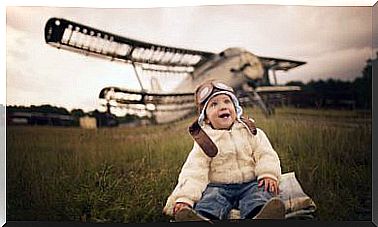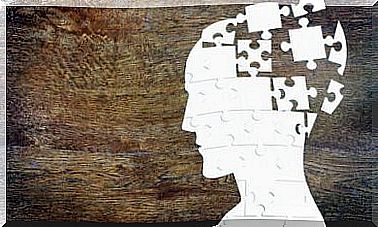The Different Types Of Attention

Understanding that there are several types of attention is as important as developing each one of them. We usually define attention as the ability to stay focused, and we generally use this concept through its antonym, lack of attention.
Whenever we talk about someone distracted or just not listening to us, we say they’re not paying attention. The question is: is it possible to live without attention?
Currently, attention disorders are in fashion. We shouldn’t be scared by this.
We live in a society that demands the constant processing of countless stimuli. Advertising, simultaneous tasks and technological devices are examples of the elements that capture our attention at all times.
Furthermore, attention is a brain-based cognitive process and, consequently, a person does not lack attention because they are distracted, they are simply using it for something else.

Attention, the executive function
Attention is one of the most complex functions of the brain, for which there is still no closed definition accepted by all. It is a function that allows us to filter stimuli, process information and focus on goals.
For all of this, the frontal lobe requires the integration of information from all the rest of the nervous system.
This process takes place at several levels that depend on the interaction with the environment. The characteristics of a task and its demands will determine the type of attention we will employ.
The types of attention
As we have already mentioned, attention occurs at different levels with very different characteristics. For this, the concept of orientation is fundamental, the awareness of ourselves in relation to the world around us.
So, the type of attention employed will depend on the level of awareness and activation needed to respond.
focused attention
This kind of attention is based on the ability to respond specifically to a stimulus. This requires the individual to ignore the rest of the stimuli that surround him. This requires a high level of alert and activation.
When a person is very tired from having been in a prolonged state of alert, they cannot ignore the rest of the stimuli as effectively, becoming more “vulnerable” to distractions.
sustained attention
Sustained attention is used for long-term tasks. It is the ability to maintain a cognitive activity with persistence.
For example, if the assignment is to read a book for an exam, we will need to read and process the information for several hours. On many occasions, the reward is not immediate. Therefore, this type of attention has several obstacles :
- Motivation.
- Fatigue.
- Boredom.
- Concise task.
divided attention
Our brain is so amazing that it allows us to do two tasks at the same time. However, these tasks cannot be as demanding, as it is necessary to divide the attention resources in order to have a good performance in both.
This capacity is limited, as as two simultaneous information sources increase their demand, the response deteriorates. For example, when we need to write and listen at the same time, look and talk to a teacher, we use split attention.
alternative attention
This is the most significant aspect of mental flexibility, understood as the ability to shift the focus of attention and move between very different tasks.
A very clear example is when we prepare a complex dish that requires working its ingredients at different times. For this, we have to change tasks without forgetting the previous task, since in a few seconds we will return to it.
The importance of attention control
Attention is not a unique or exclusive process. Most tasks require the joint action of different types of care.
Controlling attention or the ability to shift and effectively use types of attention depends on other executive functions. Among them, the most important are:
- Memory. Many tasks require retrieving material from long-term or short-term memory. For this, a good level of attention is needed.
- Planning. Other tasks require the joint and planned action of many tasks, which we need to order and execute differently.
- Inhibition. This is the ability to inhibit, filter and control sensory stimuli that do not correspond to the action being sought.

What parts of the nervous system participate in attention?
The main structures involved are:
- Ascending reticular system. Attention requires the ability to receive stimuli. Peripheral information is processed thanks to its path through the brainstem.
- Parietal wolf. Important in the spatial processing of stimuli and in the distribution of resources to a given task.
- Front lobe. He is the director of the brain orchestra. It is responsible for selecting responses and motor programs for the execution of a plan that allows the development of an action.
All types of attention are essential
Attention is a complex brain function that played a special role in our evolution and development as a species.
It is, at the same time, a skill that must be taken care of and exercised, since any damage in the mentioned areas usually causes irrecoverable delays.
The five types of attention are equally important. We use them every day for both automatic tasks like eating breakfast and complex tasks like driving in traffic.









